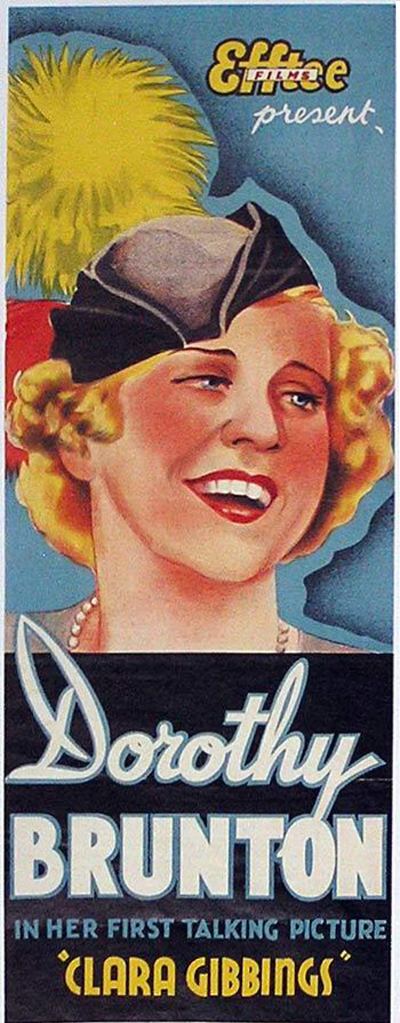Clara Gibbings
4.2 /10 1 Votes4.2
Genre Drama Produced by F.W. Thring Duration Country Australia | 4/10 IMDb Language English | |||||||||||||||||||||||||||||||||
 | ||||||||||||||||||||||||||||||||||
Release date 13 October 1934 (1934-10-13) Based on play by Aimee & Philip Stuart Similar movies Mr Chedworth Steps Out (1939) | ||||||||||||||||||||||||||||||||||
Clara Gibbings is a 1934 Australian film directed by F.W. Thring about the owner of a London pub who discovers she is the daughter of an earl. It was a vehicle for stage star Dorothy Brunton.
Contents

Synopsis
Clara Gibbings discovers she is the legitimate but abandoned daughter of the Earl of Drumoor. She becomes a member of high society but soon becomes disillusioned with their morals. She falls in love with a young aristocrat, Errol Kerr, who proposes, and they go off to live in Australia.
Cast
Original Play
The script was one of a number of play adaptations from F.W. Thring. It was based on a 1929 English play which originally been presented by Thring in Melbourne (one of the cast, Beatrice Day, collapsed and died during rehearsal). It had also been produced on Broadway under the title of Lady Clara starring Florence Nash.
Production
The film was shot at Efftee's St Kilda studios in early 1934. Although Thring was credited as director, it is likely Frank Harvey did most of the actual direction on set.
During shooting, Thring announced he would close the studios after making the movie due to difficulties in getting his product released outside Melbourne. It finished by April. Thring did make another film before shutting down the studio, The Streets of London (1934), and announced plans to revive production, but died before he was able to.
"I took one look at myself in the 'rushes' — and looked away", admitted Brunton. "I simply could not bear to see myself any more. I thought I looked terrible."
Reception
The film was previewed in September and released in Melbourne at the Mayfair Cinema on 13 October where it was reported as "recording excellent business". Reviewers commented on the fact it was basically a filmed play.
It won third prize (amounting to £750) in a competition held by the Commonwealth government in 1935. The judges said the film "contained sparkling dialogue supported by competent acting, although the adaptation of the English play on which it was based was inadequate." However, as of 1936 the film had not been seen on Sydney screens. It was released in England but received poor reviews.
Peter Fitzpatrick, biographer of Thring, later described the movie as looking "like a run-of-the-mill British B-picture, and that is at once a badge of proficiency and a mark of its remoteness from everything that Effree stood for."
References
Clara Gibbings WikipediaClara Gibbings IMDb
